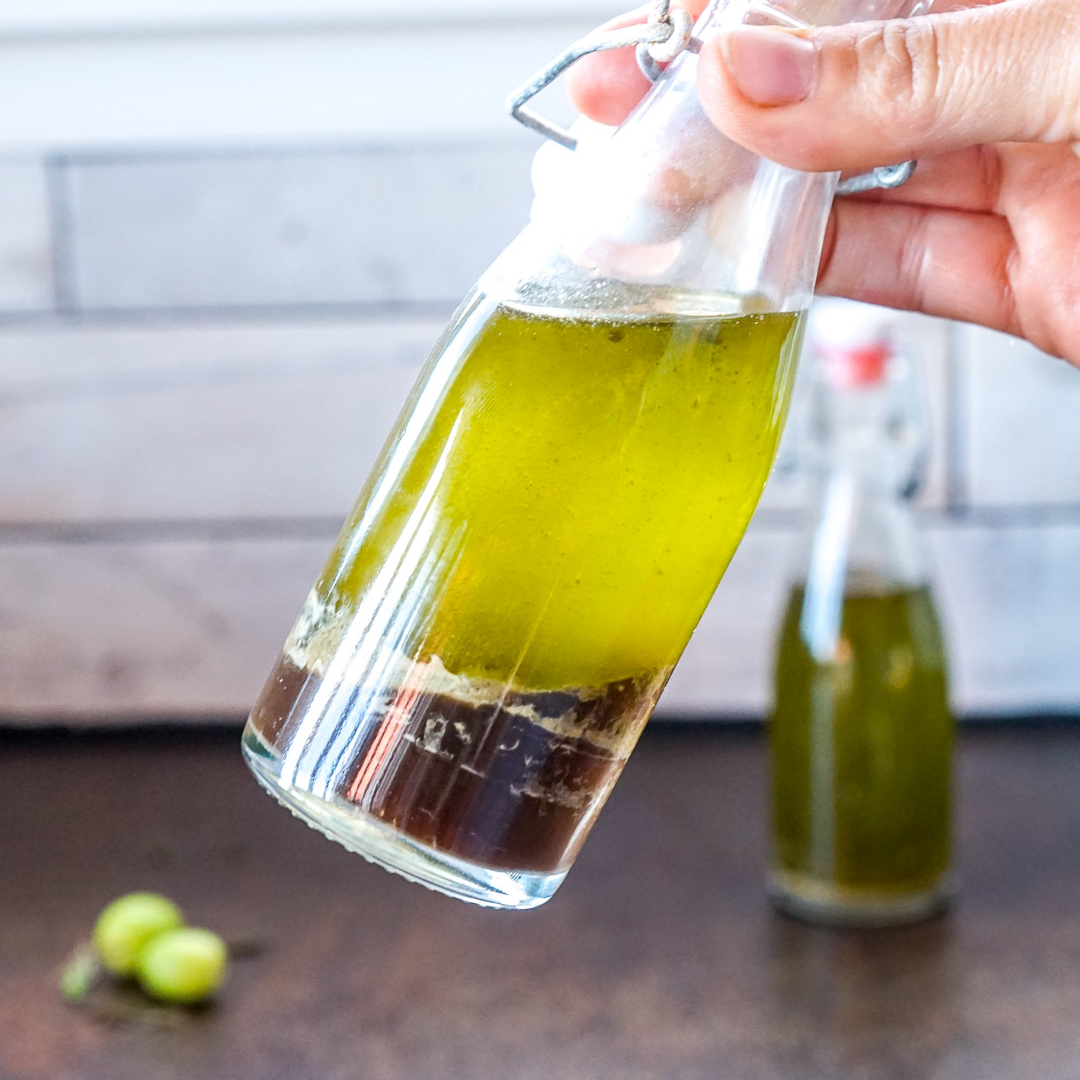
What you will need
These items are not expensive and are often already in kitchens.
- Fresh olives: Be sure to use fresh olives with or without pits. They can be green or black, a mix of colour will give good flavour. They must be no older than 24 hours from picking.
- Meat tenderizer or mallet: You need a solid metal meat tenderizer or a mallet to crush the olives.
- Blender: The process will be easier if it has a powerful motor, but it can be a countertop blender or an immersion blender.
- Fine mesh strainer: A solid all-metal strainer is best for making olive oil.
- Cheesecloth: Any type of fine cheesecloth works to strain your olives.
- Syringe or baster: If you use a syringe rather than a baster, make sure it’s food safe. Or gravy separator jug works well too.
- Dark glass bottle: This is to store your olive oil in when you’re done. It should have a lid or cork. A wine bottle works well.
Crush your olives
Once you’ve got everything you need, wash your olives thoroughly, and let them sit in a colander for a few minutes to dry. They don’t need to be completely dry, just not sopping wet. Next, use the mallet or meat tenderizer to crush your olives to a rough paste. If your olives aren’t pitted, make sure to crush the pits well, or pick larger chunks out before moving on to the next step. Note that the pits are very hard, and may damage your blender.
Blend the olive mixture
You need to turn your rough olive paste into a fine paste, using a blender to do so. Add 1 to 3 tablespoons of water to your olives, and blend for five to 15 minutes, depending on how powerful your blender is. Once you notice beads of oil forming on the olive paste or a dark sheen over the top, it’s ready. You can use either an immersion blender or a countertop blender, but using a countertop blender will save you arm ache. Set the mixture aside for five to 10 minutes before you move on, and you should see more beads of oil forming.
Strain the liquid
Put the fine mesh strainer over a bowl, and line the inside of the strainer with cheesecloth. Tip your olive mixture into the lined strainer, and fold the edges of the cheesecloth over the paste to form a parcel. Put something heavy on top, such as a bowl filled with dried rice or beans. Leave it for 30 to 60 minutes, pressing down on it every five to 10 minutes to aid the extraction.
Let the oil separate
Once the liquid has been extracted, transfer it to a large glass or another tall, clear container (gravy separator jug), and let it sit for two to three hours. During this time, the liquid will naturally separate so the water and olive juice sink to the bottom of the container and the oil floats on top of it.
Bottle your olive oil
Use a baster or food-safe syringe to pull the oil off the top of the container, leaving the watery layer behind. Transfer it to a dark glass bottle with a lid or stopper, and store it in a cool, dark place.
Method adapted from https://www.abc27.com/reviews/br/health-wellness-br/oils-br/experts-say-an-olive-oil-shortage-is-coming-make-it-yourself-with-these-products/
Grades of olive oil
Here is a link to the Four grades of olive oil

